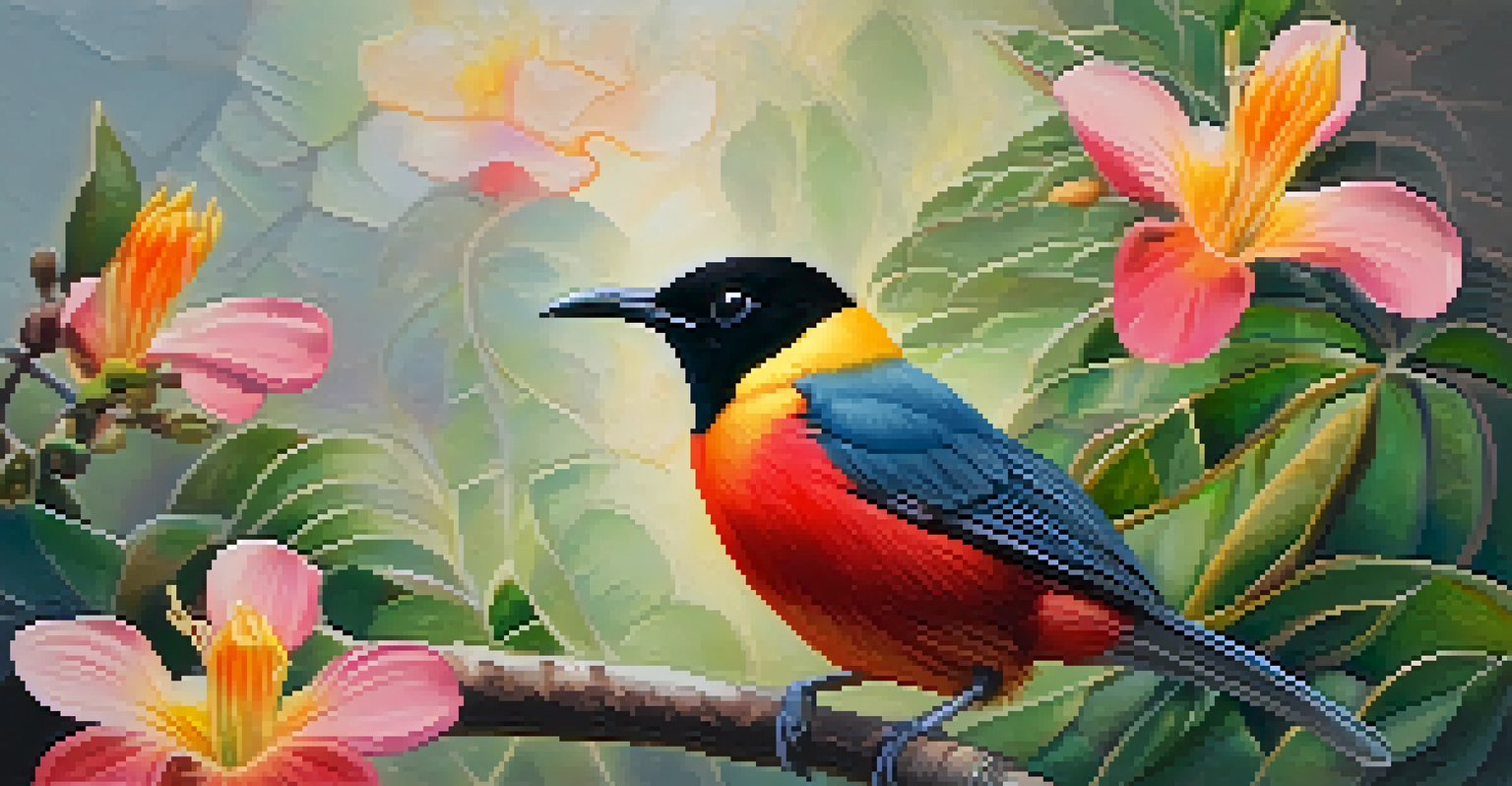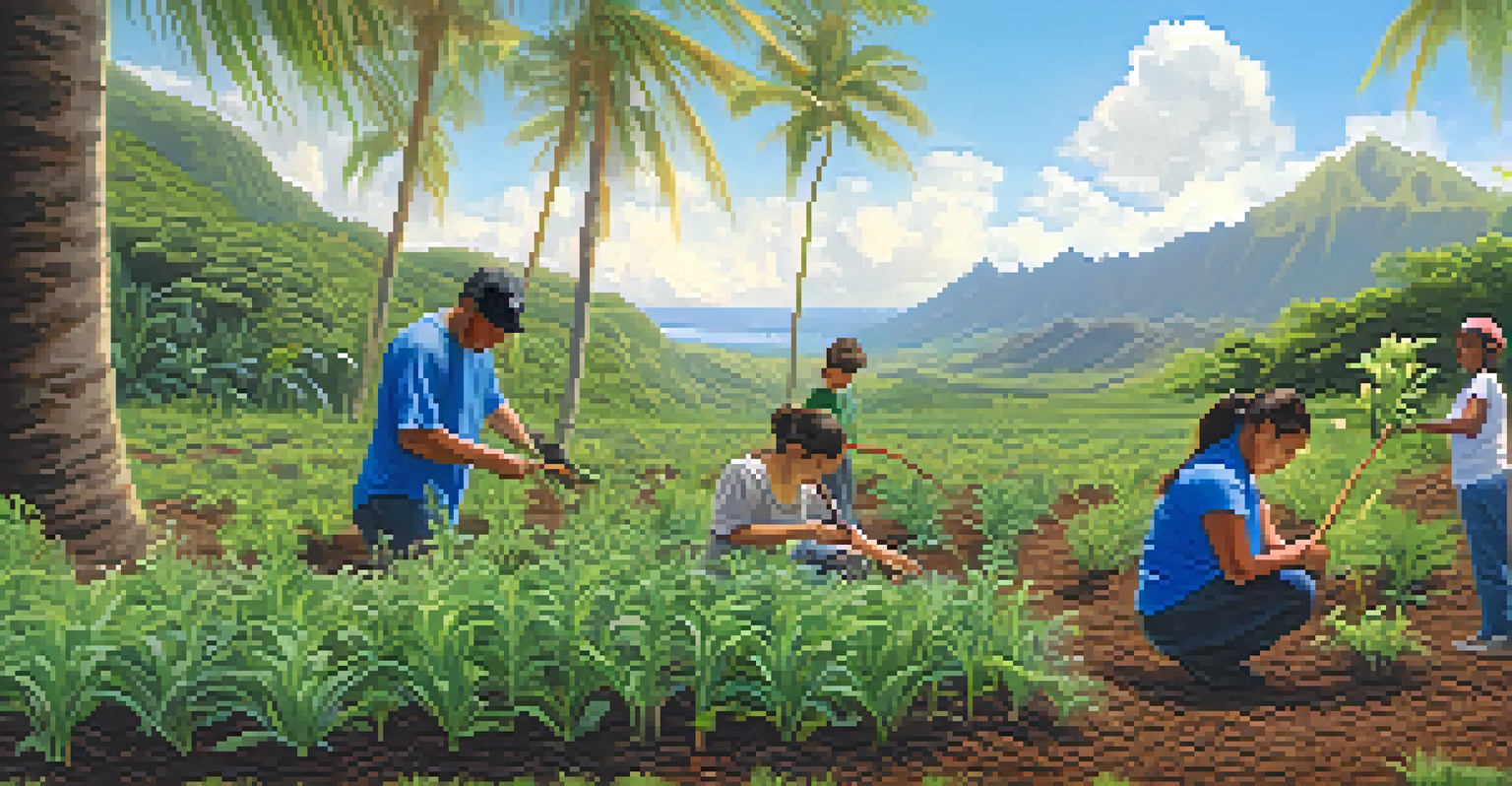Conservation Efforts: Protecting Hawaii's Endangered Species

Understanding Hawaii's Unique Biodiversity
Hawaii is often called the 'endangered species capital of the world,' and for good reason. The islands boast an incredible variety of flora and fauna, many of which are found nowhere else on Earth. This unique ecosystem has evolved over millions of years, but it faces severe threats from habitat loss, invasive species, and climate change.
The greatest threat to our planet is the belief that someone else will save it.
One of the most pressing issues is the introduction of non-native species, which disrupt local habitats and outcompete native species. For example, the mongoose, originally brought to the islands to control rats, has since become a significant threat to ground-nesting birds like the Hawaiian Goose, or Nene. This highlights the delicate balance of Hawaii's ecosystems and the need for targeted conservation efforts.
Understanding this biodiversity is crucial for effective conservation. By identifying what makes Hawaii's wildlife unique, conservationists can develop strategies to protect these species and their habitats, ensuring that the islands remain a vibrant sanctuary for future generations.
The Role of Local Communities in Conservation
Local communities play a pivotal role in the conservation of Hawaii's endangered species. Engaging residents in wildlife protection efforts fosters a sense of ownership and responsibility toward their environment. Initiatives such as community-led restoration projects not only help in preserving habitats but also strengthen cultural ties to the land.

For instance, many native Hawaiian traditions emphasize the importance of stewardship over the land, known as 'malama 'aina.' This cultural perspective drives community members to actively participate in conservation activities, such as planting native species and removing invasive plants.
Hawaii's Biodiversity is Unique
Hawaii's flora and fauna are unlike any other, making conservation efforts crucial to protect these endangered species.
Moreover, educational programs aimed at schools and local organizations can raise awareness about endangered species, encouraging younger generations to value and protect their natural heritage. When communities unite for a common cause, the impact can be profound, leading to more effective and sustainable conservation efforts.
Government Initiatives and Policies in Hawaii
The state of Hawaii has implemented various policies and initiatives aimed at protecting its endangered species. The Hawaii Department of Land and Natural Resources (DLNR) works tirelessly to enforce laws that prevent poaching and habitat destruction. Additionally, they collaborate with federal agencies to ensure that endangered species receive the protection they need.
In every walk with nature one receives far more than he seeks.
One notable program is the Endangered Species Recovery Committee, which assesses the status of endangered species and recommends recovery plans. These plans often include habitat restoration, breeding programs, and public awareness campaigns to educate the public about the importance of these species.
While government efforts are crucial, they are most effective when supported by community involvement and scientific research. By combining resources and expertise, Hawaii can create a comprehensive approach that safeguards its unique wildlife for years to come.
Success Stories: Species on the Rebound
Despite the numerous challenges, there have been inspiring success stories in Hawaii's conservation efforts. One prime example is the Hawaiian Goose, or Nene, which was once on the brink of extinction. Thanks to dedicated breeding programs and habitat restoration initiatives, the population has rebounded from just 30 birds in the 1950s to over 2,500 today.
Another success story involves the restoration of the Hawaiian Hoary Bat, which was listed as endangered due to habitat loss and predation. Through habitat management and public education efforts, there has been a notable increase in their numbers, demonstrating the effectiveness of targeted conservation strategies.
Community Involvement is Key
Local communities play an essential role in conservation by engaging in protection efforts and fostering cultural ties to the land.
These success stories serve as a testament to the resilience of Hawaii's wildlife and the dedication of those who work tirelessly to protect it. They remind us that with the right strategies and community involvement, we can make a significant difference in the fight against extinction.
The Threat of Climate Change on Endangered Species
Climate change poses an existential threat to Hawaii's unique ecosystems and the endangered species that call them home. Rising sea levels can lead to the loss of coastal habitats, while increased temperatures can disrupt delicate ecosystems. For example, coral reefs, essential for many marine species, are suffering from bleaching due to warmer waters.
Moreover, changing weather patterns can affect the migration and breeding patterns of various species. For instance, the Hawaiian Honeycreeper, a group of birds found nowhere else, is facing challenges as their food sources fluctuate with climate change. This underscores the interconnectedness of climate health and biodiversity.
Addressing climate change requires a multi-faceted approach that includes reducing greenhouse gas emissions and implementing adaptive management strategies. By prioritizing these efforts, Hawaii can help protect its endangered species from the worst impacts of climate change.
The Importance of Research in Conservation Efforts
Research is a cornerstone of effective conservation efforts in Hawaii. By studying the behavior, habitat needs, and population dynamics of endangered species, scientists can develop informed strategies to protect them. For example, tracking the movements of the Hawaiian Monk Seal provides vital data that helps conservationists understand their habitat use and threats.
Moreover, research can identify the impacts of invasive species and inform management practices to mitigate these effects. Studies on the spread of invasive plants help prioritize removal efforts, ensuring that resources are allocated efficiently. This scientific backing is crucial for creating successful conservation programs.
Climate Change Threatens Ecosystems
Rising sea levels and changing weather patterns pose significant risks to Hawaii's ecosystems and the species that depend on them.
Involving the community in research initiatives can also enhance conservation efforts. Citizen science projects allow residents to contribute to data collection, fostering a deeper connection to their environment. Together, research and community engagement create a powerful force for conservation.
Future Directions for Hawaii's Conservation Initiatives
Looking ahead, Hawaii's conservation initiatives must adapt to the evolving challenges posed by environmental change. This means not only protecting existing habitats but also creating new ones that can withstand the impacts of climate change. Strategies like establishing wildlife corridors can help species migrate to safer areas as their habitats shift.
Furthermore, enhancing collaboration between government agencies, non-profits, and local communities will be key to achieving conservation goals. By pooling resources and expertise, stakeholders can develop comprehensive plans that address the multifaceted challenges facing Hawaii's endangered species.

Lastly, ongoing education and public awareness will play a critical role in the future of conservation in Hawaii. By fostering a culture of conservation, we can ensure that both residents and visitors understand the importance of protecting the islands' unique biodiversity for generations to come.